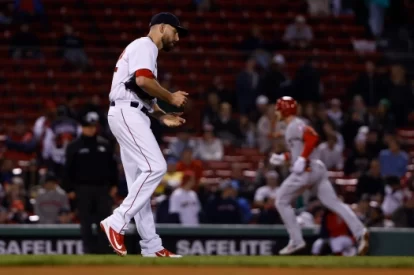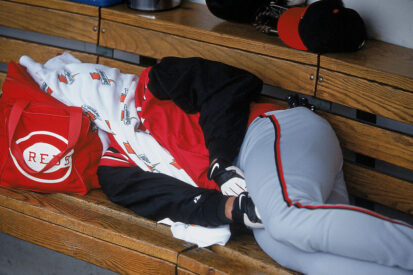The on-deck circle is arguably the most important part of your at-bat. Your preparation is the separator between mediocrity and success and what you do in the on-deck circle is your final preparation before stepping into the box for your next at-bat.
Unfortunately, many players do not utilize this time properly to give themselves the best chance in their upcoming at-bat. There is lots of time being waste in the on-deck circle such as doing extra stretching, swinging around a donut, or just standing there taking swings with no intent. All these things should be done before you get there so we can prepare the right way for your at-bat.
What happens if the situation is crucial when you step in there? What happens if there is a runner on 3rd base with less than 2 outs and he is the game-winning run? We want to give ourselves the best chance to succeed when we get into the box so the on-deck circle is extremely important.
It is not the players fault either because a lot of them just don’t know how to utilize their time effectively. Being a current high school coach, I have asked players on what they do in the on-deck circle. The overwhelming answer: to stretch and get loose. Once they understand the purpose and they start to see results because of it, they will buy into utilizing the on-deck circle the right way.

So what does a good on-deck routine look like? Below are three habits that every hitter should cover while using the on-deck circle:
- Get as far down the line as you can
This is very simple. Get down the line as far as you can, which means to try to get behind the catcher and umpire. A good sign that you are getting far enough is when the umpire tells you to move further down the line. The reason for this is because you get to see the pitches thrown from the pitcher much clearer. Just imagine when you are in the dugout. Sometimes the pitcher looks firm, but when you get into the box, it really isn’t. Sometimes it looks slow from the side, but it is actually firm. Getting further down the line will help you to get the right angle for you to judge the speed and also see the break on each pitch, which gives you the advantage before you step into the box.
- Rhythm and Timing
The main focus in the on-deck circle should be on your rhythm and your timing. To me, your rhythm dictates your timing. You should be watching and studying the pitcher to watch his delivery to home plate so that you can determine when to start your load and when to get your foot down for your swing. To be on time is for your foot to land as you wish to start your swing while contacting the ball in your damage zone. From there, we must start early enough to make sure this is possible. Every pitcher will have different tendencies coming home, which is why it is important to make sure your rhythm and timing is in sync with the pitcher before stepping into the batter’s box for your at-bat.
- Thoughts
Lastly, your thoughts are extremely important as a hitter. Many times you can tell what hitters are thinking in the box based off of their actions. You can see that some hitters are scared of the ball, some hitters exude confidence, and some hitters are defeated. We all want to be the hitter that has confidence so we must ensure that in the on-deck circle. We control our thoughts so if we feed our mind good and positive thoughts, we can make sure that we have the confidence we need for that at-bat. Simply put, just think of how you are going to do damage at the plate and repeat that in your mind.
Your on-deck circle routine is very important for your at-bat so we must take this seriously. We can stretch before we get out into the circle, which is crucial as well, but we can leave our time there for what really matters for that at-bat.









